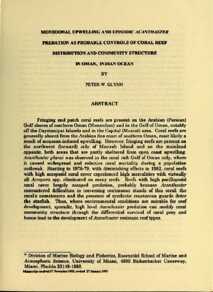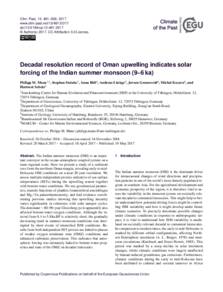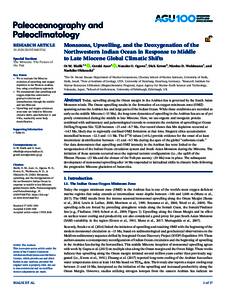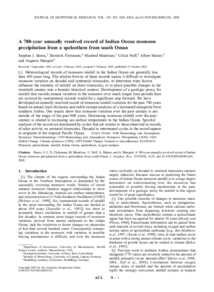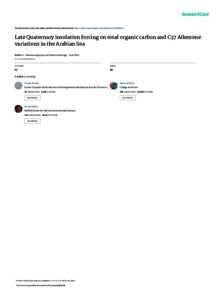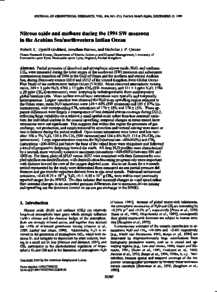وثيقة
Monsoonal upwelling and episodic acanthaster predation as probable controls of coral reef distribution and community structure in Oman, Indian Ocean.
المعرف
DOI: 10.5479/si.00775630.379.1
المصدر
Atoll Research Bulletin. v. 379-389, 379, p. 1-66
الدولة
United States.
مكان النشر
Miami
الناشر
University of Miami.
ميلادي
1994-01-27
اللغة
الأنجليزية
الموضوع
الملخص الإنجليزي
Coral reefs are generally absent from the Arabian Sea coast of southern Oman, most likely a result of monsoon-induced upwelling, but fringing reefs are present on the northwest (leeward) side of Masirah Island and on the mainland opposite, both areas that are partly sheltered from open coast upwelling. Acanthaster planci (crown-of-thorn starfish) was observed in the coral rich Gulf of Oman only, where it caused widespread and selectiv coral mortality during a population outbreak. Starting in 1978-79, with diminishing effects to 1982, coral reefs with high acroporid coral cover experienced high mortalities with virtually all Acropora spp. eliminated on many reefs. Reefs with high pocilloporid coral cover largely escaped predation, probably because Acanthaster encountered difficulties in traversing continuous stands of this coral: the coral's nematocysts and the presence of symbiotic crustacean guards deter the starfish. Thus, when environmental conditions are suitable for reef development, sporadic, high level Acanthaster predation can modify coral community structure through the differential survival of coral prey and hence lead to the development of Acanthaster resistant reef types. -from Author
ISSN
0077-5630
قالب العنصر
مقالات الدوريات

